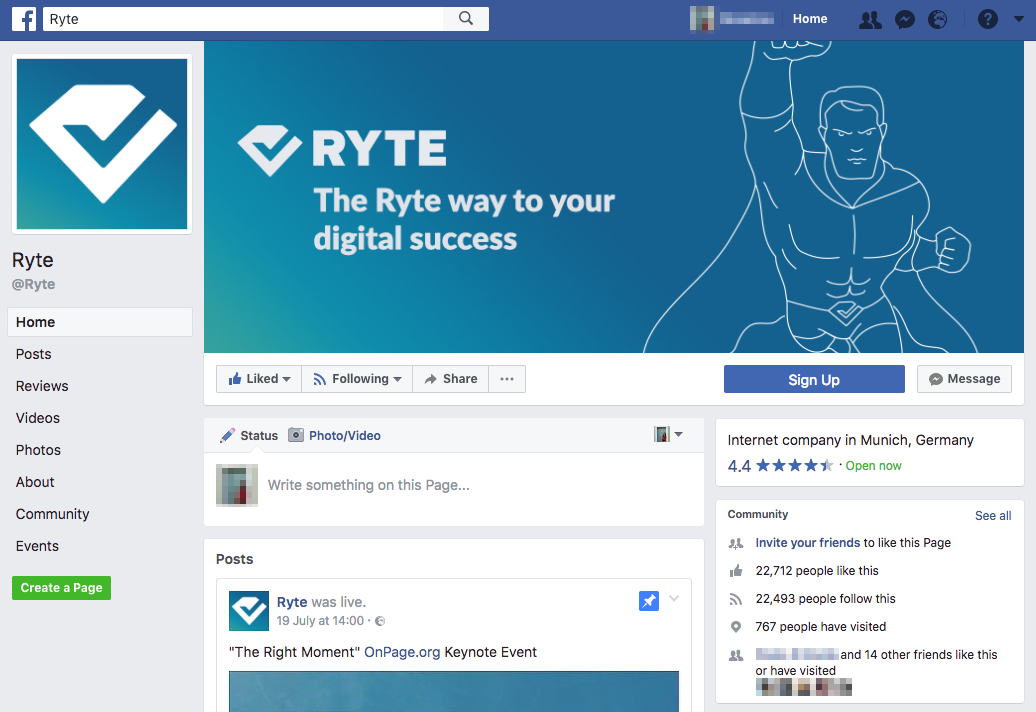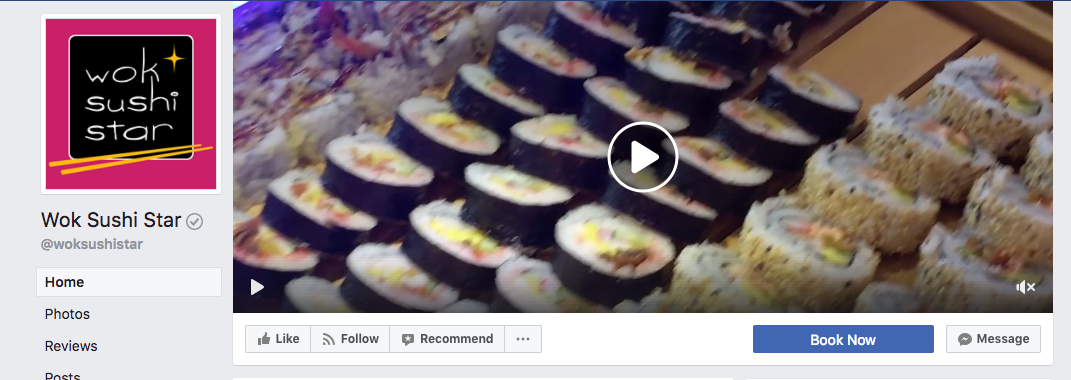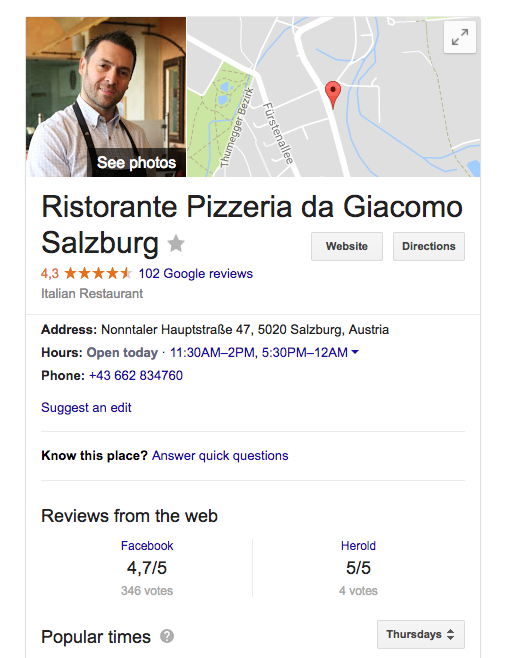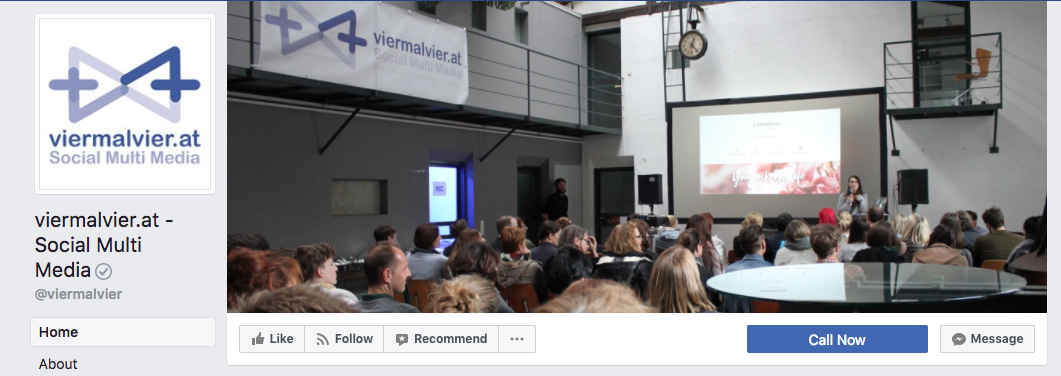Around 2 billion people worldwide use Facebook to communicate actively with one another, to exchange views, and to obtain information about companies, products and services.

There are over 60 million company pages on Facebook, and the competition to attract the attention of users is increasing constantly. However, many companies who use Facebook pages don’t make the most out of their potential. In this article, I would like to give you a few tips and tricks to help you make more out of your Facebook page.
Before we begin with tips for your Facebook page, you should take note of these two general points:
Choosing the right category is a lot more important than many operators think; the category does not only have an impact on which fields you can fill out in the information area, but it also influences whether Facebook categorizes your page correctly. For a restaurant, choosing the correct category will enable it to appear as a suggestion for potential customers, for example with the function “Places where your friends have been”. Choosing the correct page category will become even more important when the Facebook directory or “Places” becomes standard for Facebook users.
Facebook offers page operators branch-specific templates for their Facebook page. The templates differentiate in both functionality and layout. Choosing the correct template will enable you to provide appropriate content to visitors to your page.
Facebook offers the following templates:
For example, if you operate an online shop, the template “shopping” will help you to list your products on Facebook in a “shop-Tab”, which can be linked. If your company caters to the local population and is dependent on walk-in customers, “Restaurants and Cafés” would be the best option. Click through and try out different templates to find the best one for your business.
The choice of templates impacts the layout and the content of the homepage of your Facebook page.
A few months ago, Facebook made it possible to use short video clips as a cover photo, not just static photos. A short video that highlights your services or products will make your page more noticeable and convincing, as a video starts automatically when someone visits your Facebook page. Most importantly, you need to make the most out of the user’s first impression to optimize and thus to persuade. The video can last between 20 and 90 seconds. A slideshow is also a type of video that can be used as a cover photo.
A catering company could, for example, show the preparation of a meal or of a cocktail. A tourist company could portray a hotel room or a panorama of a mountain view, etc.
The Salzburg Sushi-Restaurant “Wok Sushi Star” that achieved fame through a viral video viral shows a video of the broad choice of sushi on offer.

Figure 1: Cover picture in the form of a short video, (source)
Changing your cover photo regularly is fine if it is relevant for your fans. If you use a static picture instead of a short video, you should take note of the following points:
Facebook is developing increasingly into a ratings platform for companies. This is largely due to a strategic decision by Facebook to channel and standardize customers’ opinions (using star ratings) and making them filterable. This makes lesser known companies more visible.
Facebook Places: here, you can search for great places in towns, such as restaurants, bars, hotels etc, mostly in a touristic context, arranged among other things by the number and value of the ratings, and whether Facebook friends have already been there.
Facebook Directory: this function can be seen as a direct challenge to the yellow pages, although the directory is nowhere near as comprehensive as required by the users. Nevertheless, this function shows in what direction Facebook wants to go; whether we search for a plumber, a hair dresser or a photographer, facebook wants to be able to offer this pool of data in a structured way, thus making the platform and its data more valuable.
From Facebook’s point of view, this is a logical step in building up more prestige against the competition. On Facebook, users show their desire to communicate about and to rate companies, products and services. Increasing numbers of Facebook users selectively search for reviews for companies, and let them flow into their information process, not to mention the fact that Facebook ratings are increasingly being taken up in the Google-Business-entries (under “Reviews from the web”).

Figure 2: Integration from Facebook-ratings in Google-Business entries is prominent in the search results on google (source)
The Call-to-action button (CTA button) can be found on the desktop-version of Facebook underneath the cover photo, and it essentially offers the user an option by means of one click, for example, to contact you.
There are 5 different categories of button on Facebook:
Booking services
Suitable for restaurants, take-aways, or for service providers such as travel agencies.
Getting in touch
This is the standard choice for many page operators – you provide the following details, allowing users to contact you easily:
More
With this, you can link to a video on Facebook or to a website.
Buy or donate
Here you can link to an online shop, to particular products, or to an offer on the Facebook page or website.
Download an app or game
In case you operate a smart phone app or game, here you can link to your store.
Tip
When you click on the option “+show options”, a window with extra “booking” options through “apps from service providers and partners” will open. Here, there are direct links to different service providers such as delivery.com. The list isn’t very comprehensive and I am not aware of any possibility of adding further external apps or service providers independently, but it’s still good to know that it’s there.
The well-known Facebook-Tabs (previously known as Apps) were frowned upon for a long time, because apart from the Facebook-standard Tabs, these apps or tabs weren’t visible in the mobile facebook-app and therefore weren’t usable by the majority of facebook users.
For a long time now, facebook has offered users the option to provide further information by means of the following tabs:
Companies should simply try out different tabs to see which tabs would be most suitable. I would also recommend keeping the list of tabs relatively short to guarantee a good overview. You can change the order of the tabs in the settings of your Facebook-page.
In the so-called “Shop” tab, you can add products. It makes sense to do this even if you don’t actually have an online shop, because by adding your products here, users will be able to link (tag) them in postings. Your company and products will therefore gain more attention.
No matter whether it’s opening times, directions, link to a website, or phone number, the information area helps Facebook users to verify that they are looking at the correct page, or shows them how to contact the company.
There are different “verifications” on facebook. Big brands and well-known people often have a “blue tick” by their page names. This is (and was) only possible to obtain via direct contact with facebook, and according to different sources, facebook might let this function soon disappear. A further verification possibility is the “grey tick”, which should show Facebook users that this is the official Facebook presence of a company. Any Facebook-page operator can apply for this easy verification in the account settings.

Figure 3: A verified Facebook page has a grey checkmark next to the page name (Source: Source)
There are many more methods of optimizing your Facebook page (this list of tips is by no means exhaustive), but points 1-9 offer huge potential for all page operators and will raise the standard of your Facebook page.
Many Facebook page operators don’t know all of the possibilities for optimizing their Facebook page, and can target small improvements from the basics such as choosing the correct category and template to verifying their Facebook page. But just to reiterate, the most important thing is the relevance of your postings. If they’re relevant, you’ve already fulfilled the most important aspect and with your technical optimization, you can give this a bit more worth.
Which optimization methods do you use?
Practice makes perfect!
Analyze your website with Ryte for FREE
Published on 08/17/2017 by Karim-Patrick Bannour.

Karim-Patrick Bannour is founder and CEO of the social media agency viermalvier.at. Together with Anne Grabs, he wrote the social marketing best-seller “Follow me! – Erfolgreiches Social Media Marketing” (Galileo Computing). He also frequently speaks and gives workshops for organisations such as ÖHV or The Austrian Federal Economic Chamber. In 2016, he founded the Amazon agency MarktPlatz1 and together with his team supports providers and traders on Amazon.
Own the SERPs with the only Platform using exclusively Google Data.
Book free demoWe use Facebook Page to embed content that may collect data about your activity. Please review the details and accept the service to see this content.
This content is not permitted to load due to trackers that are not disclosed to the visitor. The website owner needs to setup the site with their CMP to add this content to the list of technologies used.